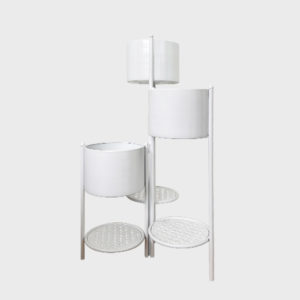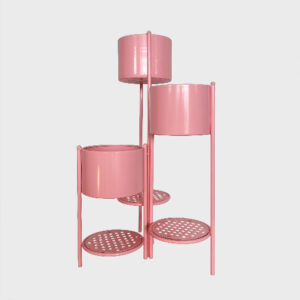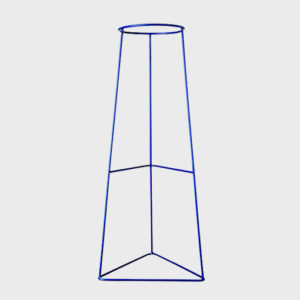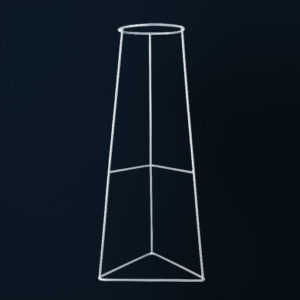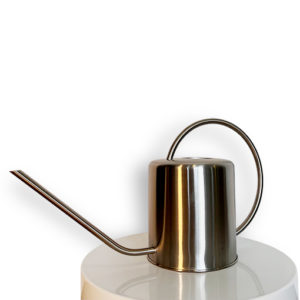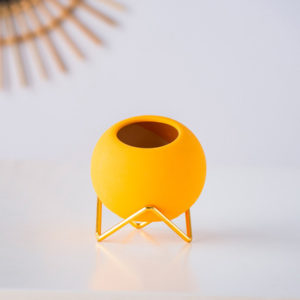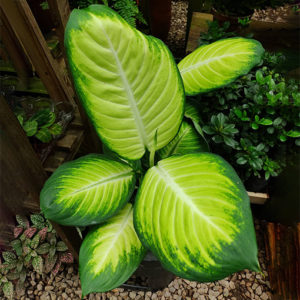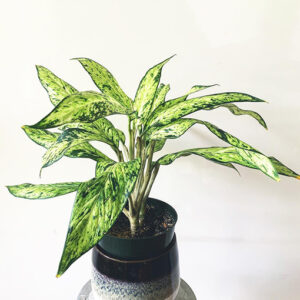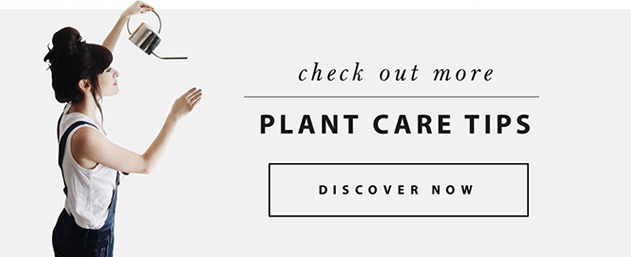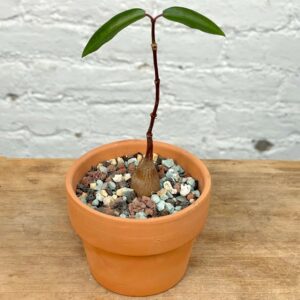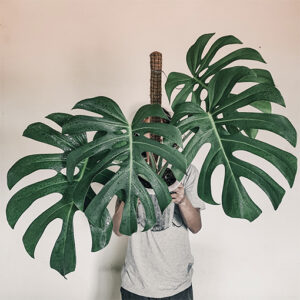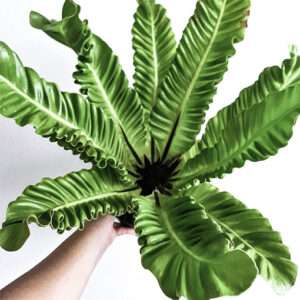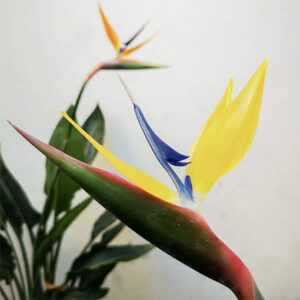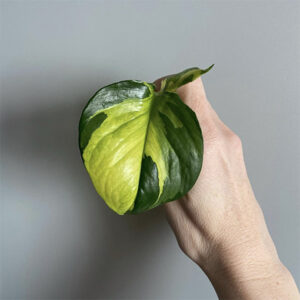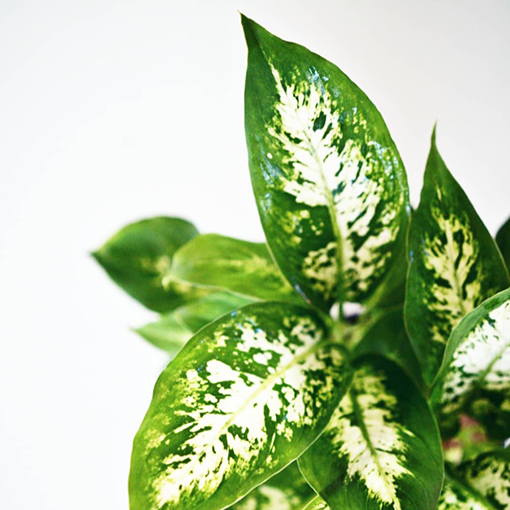
Compacta to fit more in! This Dieffenbachia certainly packs a punch. Easy care and always a pleasure! 📸: @ppapi_green
Dieffenbachia ‘Compacta’ – Dumb Cane Characteristics
This is very popular and easy indoor plant because it adapts to lower light conditions. It has a straight stem and patterned leaves and makes an attractive feature plant. ‘Compacta’ is a smaller cultivar that readily clumps up and grows to only 50cm high, making it suitable as a table specimen.
Dieffenbachia ‘Compacta’ – Dumb Cane Natural Environment, Lighting, Humidity, Watering and Fertiliser
Dieffenbachia species are native to Mexico and South America where they are rainforest plants that may grow to 10m high. That said, they are adaptable to indoor conditions. Growth is best in medium to bright indirect light and moderate humidity. However, they will tolerate low light and drier conditions as long as they get enough water to the roots. Water once the top 2 or 3 cm of mix is dry and use a dilute fertiliser regularly while the plant is actively growing. Use a well-draining but water-retentive mix and a large enough pot to keep the plant stable. These plants prefer the relatively stable temperature conditions indoors, and it is best to avoid temperature fluctuations near heaters or air conditioning vents or external doors, especially in winter.
We recommend using our Plant Food available here.
Dieffenbachia ‘Compacta’ – Dumb Cane Tips and Position
Fluid dripping from the leaves is a sign that the plant has been consistently overwatered and is in too low light and the plant is ridding itself of excess water by forcing sap from the leaf margins. Make sure the plant is not sitting in a saucer of water, allow to dry down and move the plant to a brighter spot with better air movement.
It is normal for the lower leaves to turn yellow and fall after about a year. However, if there are a lot of yellow leaves at the base of the plant, it is likely that the plant needs more light and less water. Leaves with curled or brown edges are a sign of excessively dry conditions. The best leaf patterning is generally achieved in medium to bright light. Too little light and the leaves turn more solid green. Too much light and the leaves may not develop enough green tissue and look bleached.
Dieffenbachia ‘Compacta’ – Dumb Cane Common Pests
Dieffenbachias are attacked primarily by spider mites and mealybugs. Wipe the leaves monthly with a soft damp cloth to remove the dust that favours the development of mite populations.
For more information on how to manage common plant pests, head to our blog here.
Dieffenbachia ‘Compacta’ – Dumb Cane Toxicity
Like all the aroids, dieffenbachias are toxic to humans and pets. Excessive consumption of any plant part can result in excessive drooling, painful swallowing, respiratory distress, and loss of speech (hence the common name dumbcane). Sap on the skin can produce dermatitis.
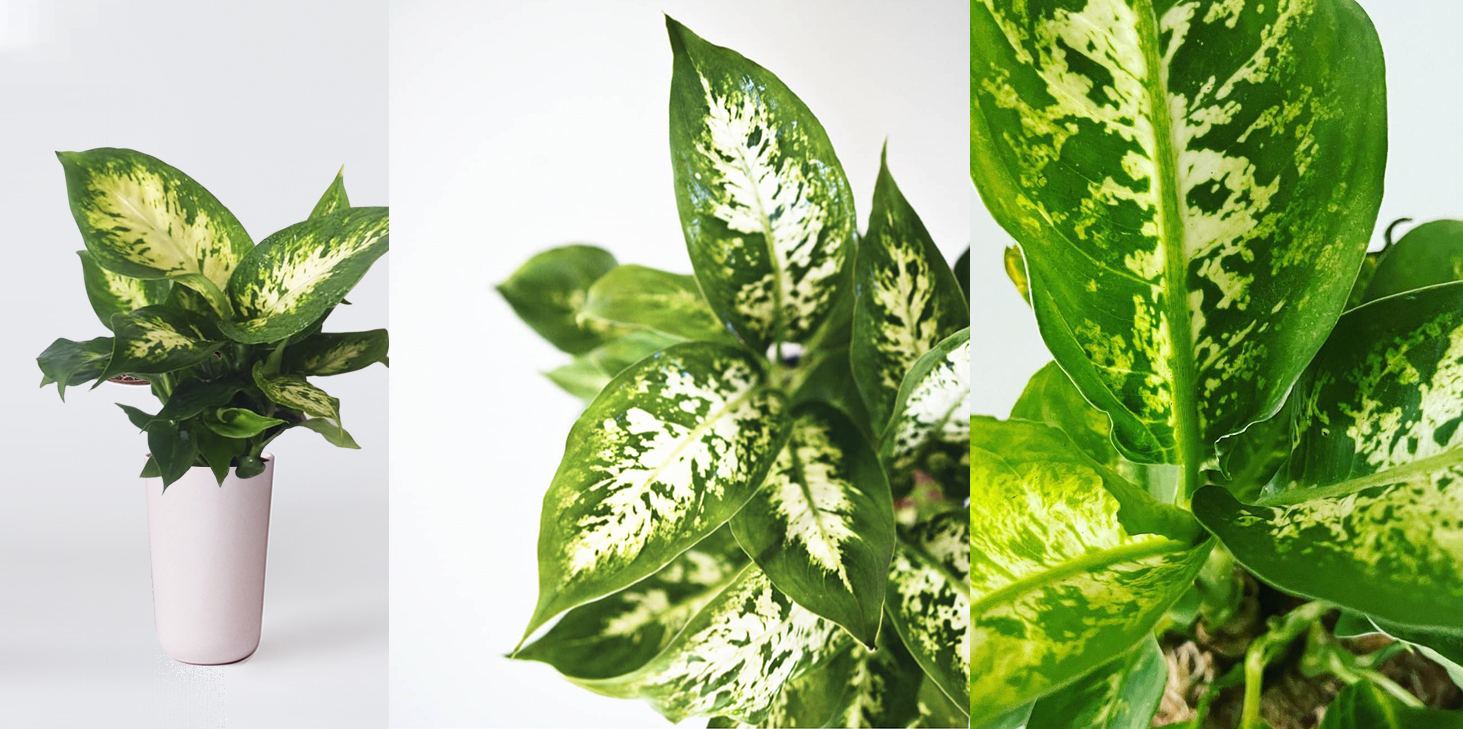

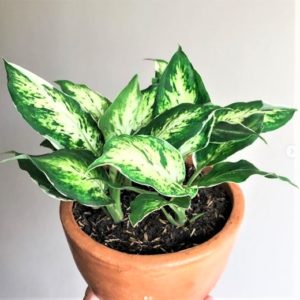 Dieffenbachia Compacta - Dumb Cane 70mm
Dieffenbachia Compacta - Dumb Cane 70mm
